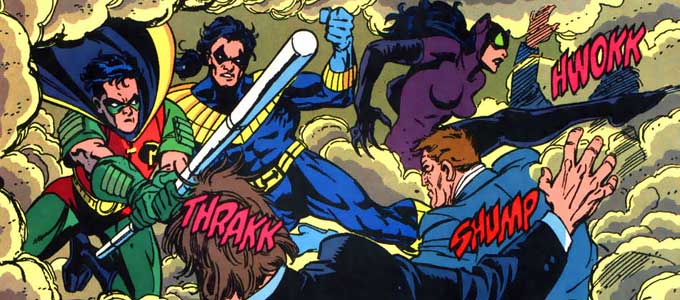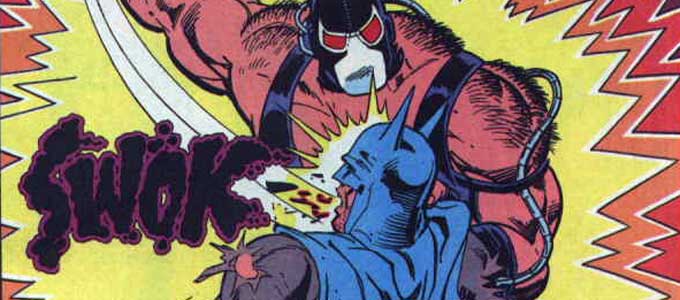This page may contain one or more affiliate links, which means that if you purchase a product through that link, I may receive compensation. The links will be identified with the text "affiliate link". Click to learn more.
What if Batman faced a villain that was not only stronger, but smarter than him? That is the idea behind the Batman: Knightfall story arc. Published during the 90s, it contributed to the great comic book industry crash of the decade. It introduced the villain Bane, who was too ruthless to be a fair match against Batman. Bane was obsessed with breaking Batman, both physically and mentally, but mostly mentally.
In Batman: Knightfall, Bane breaks Batman’s back. (Actually, he just fractures it) In order to replace Batman, Bruce Wayne (who is Batman, obviously) recruits Jean-Paul Valley to temporarily replace him, also known as Azrael. The problem though was that Azrael was even more ruthless than Bane, due to his subliminal training. Using custom advanced armor and weaponry, Azrael not only defeated Bane, but aspired to be a better Batman. He decided to clean up Gotham, even if it meant killing, and refusing to give up the Batman throne. This second part of the story is called Knightquest.
The third part is called KnightsEnd, and it is when Bruce Wayne must defeat Azrael, who is unwilling to give up being Batman. Of the three parts, the second, Knightquest, is the worst. Others must have agreed with this opinion, because people stopped reading Batman comics and contributed to a heavy industry crash, causing comic book shops to close across the nation. Batman: Knightfall vol 1 however is very entertaining, as well as KnightsEnd vol 3.
Batman: Knightfall, Knightquest and KnightsEnd were originally spanned across countless comics, but were eventually republished in three volumes. If you were to collect these stories and were to decide which one was best, I would say it would be Batman issue 510. This comic is action packed in every sense of the word. Robin, Batman, Nightwing, Catwoman, and Azrael all pound fists and kicks in this issue.

You have to check out (Affiliate Link) Batman 510. You do not even need to have read the other KnightsEnd story comics if you do not want to, all you need to know is that Batman is back to whoop his imposter’s butt! I would also recommend picking up Batman: Knightfall volume 1 if you have the chance as well.
Fan of Batman: Knightfall, or the other volumes? Leave me a comment below and tell me what you are thinking…

